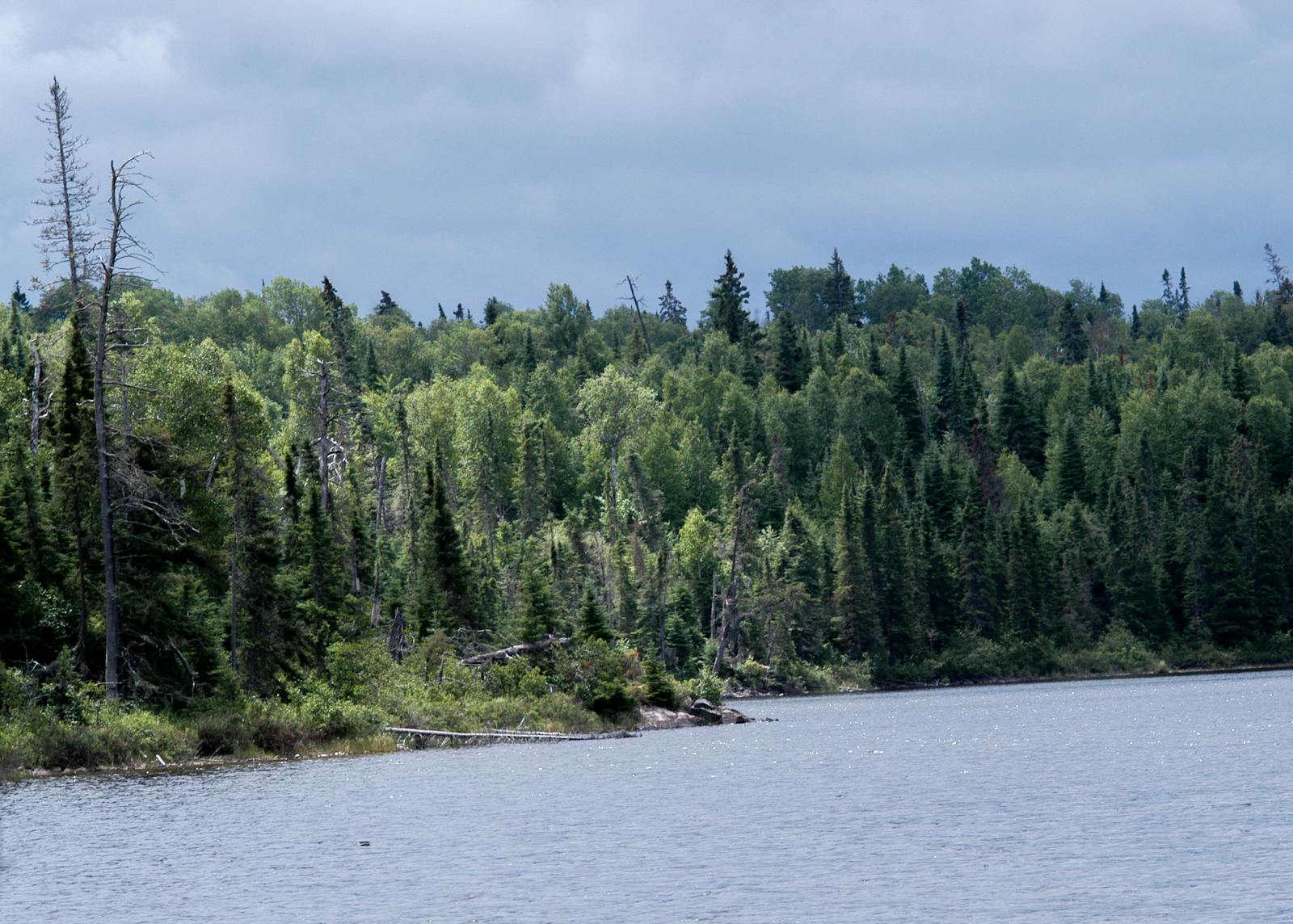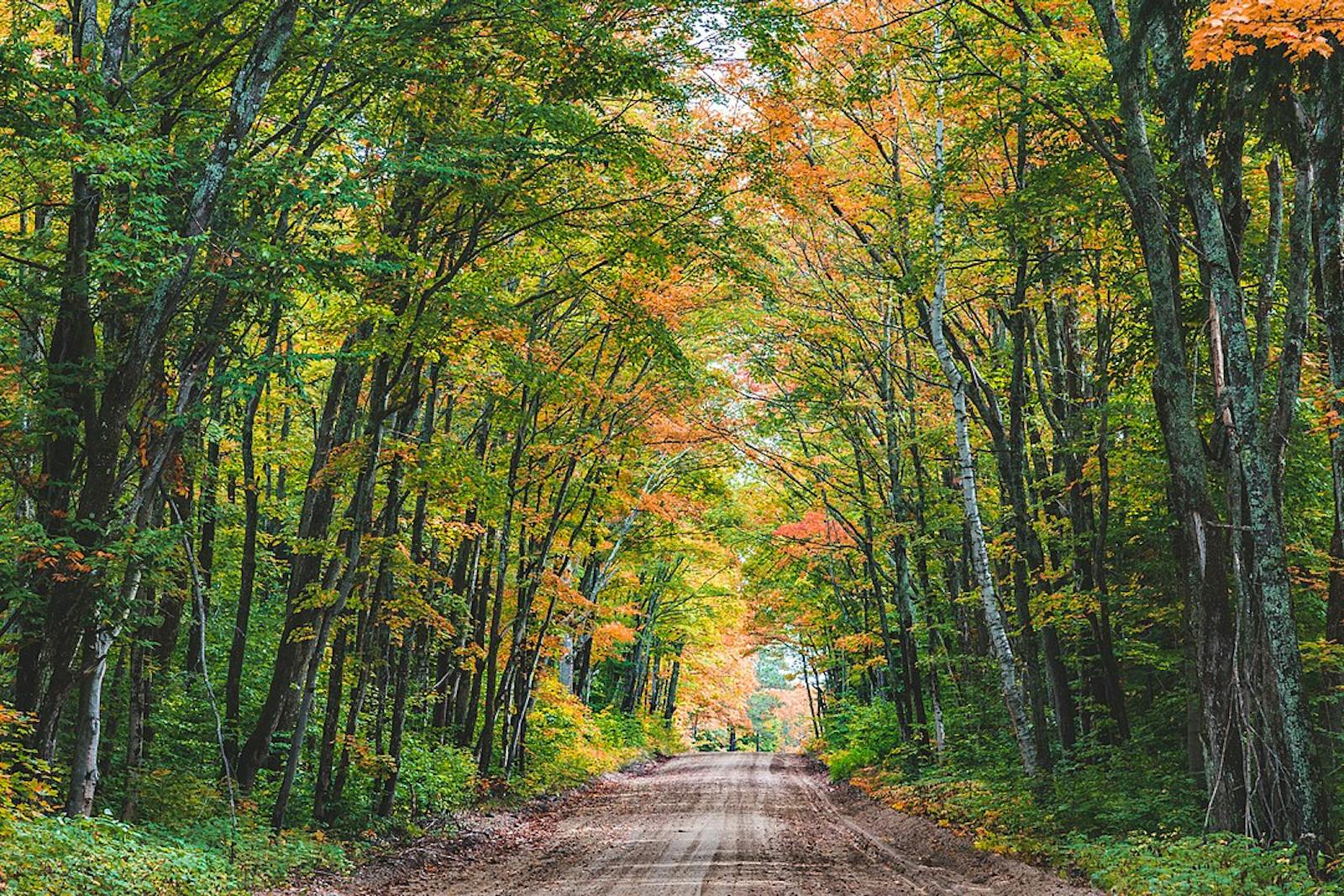Western Great Lakes Forests
The ecoregion’s land area is provided in units of 1,000 hectares. The conservation target is the Global Safety Net (GSN1) area for the given ecoregion. The protection level indicates the percentage of the GSN goal that is currently protected on a scale of 0-10. N/A means data is not available at this time.
Bioregion: Northern Great Lakes Forests (NA11)
Realm: Northern America
Ecoregion Size (1000 ha):
28,995
Ecoregion ID:
344
Conservation Target:
62%
Protection Level:
2
States: United States: MI, WI, MN. Canada: ON, MB
The Western Great Lakes Forests ecoregion stretches from Michigan, where it encompasses nearly half of the Lower Peninsula and all of the Upper Peninsula, through northern Wisconsin and Minnesota, southwestern Ontario, to the southeastern corner of Manitoba. Much of the region is defined by the southern portion of the Canadian Shield, a huge mass of exposed Precambrian igneous and metamorphic rocks (especially granitic gneisses), which comprise the ancient geological core of the North American continent.
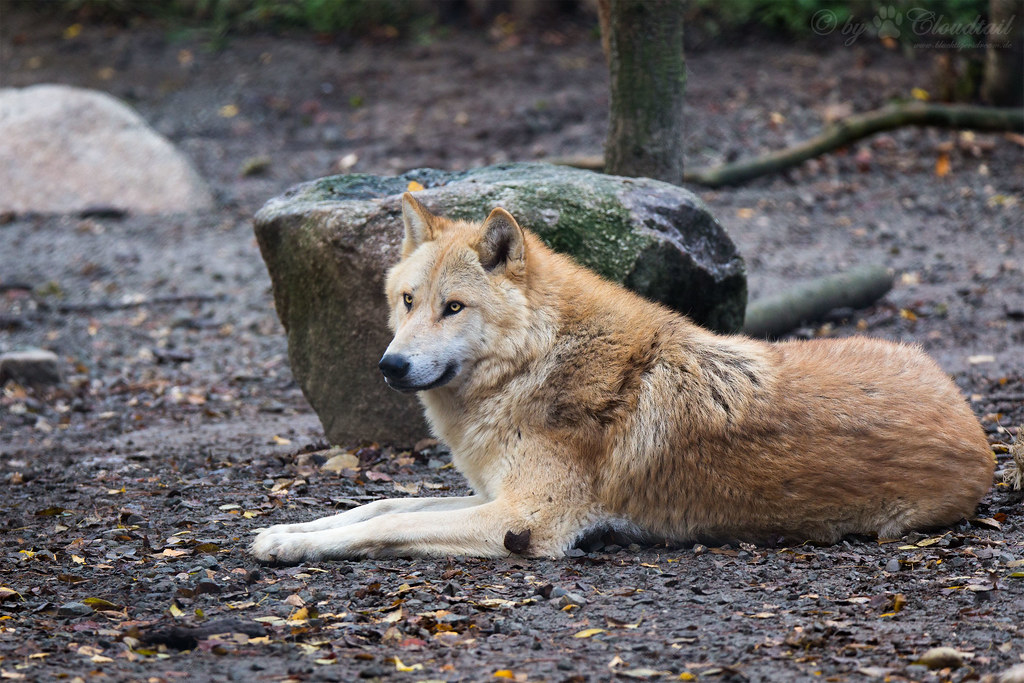
The flagship species of the Western Great Lakes Forests ecoregion is the eastern timber wolf. Image credit: Cloudtail the Snow Leopard, Creative Commons
Exposed basaltic bedrock in the Upper Peninsula of Michigan, including Isle Royale in Lake Superior, has many disjunct plant species from the Pacific Northwest, another region rich in basalt. The limestones of the Niagara Escarpment extend in an arc through a portion of this ecoregion in Michigan and Wisconsin.
The entire ecoregion was covered by glaciers during the most recent (Wisconsin) glaciation and previous glaciations, such that moraines and other glacial features are common. Post-glacial rebound (a rise in the land surface after retreat of the heavy ice sheets) is still occurring today at variable rates, up to one meter or more per century, and is predicted to continue for thousands of years.
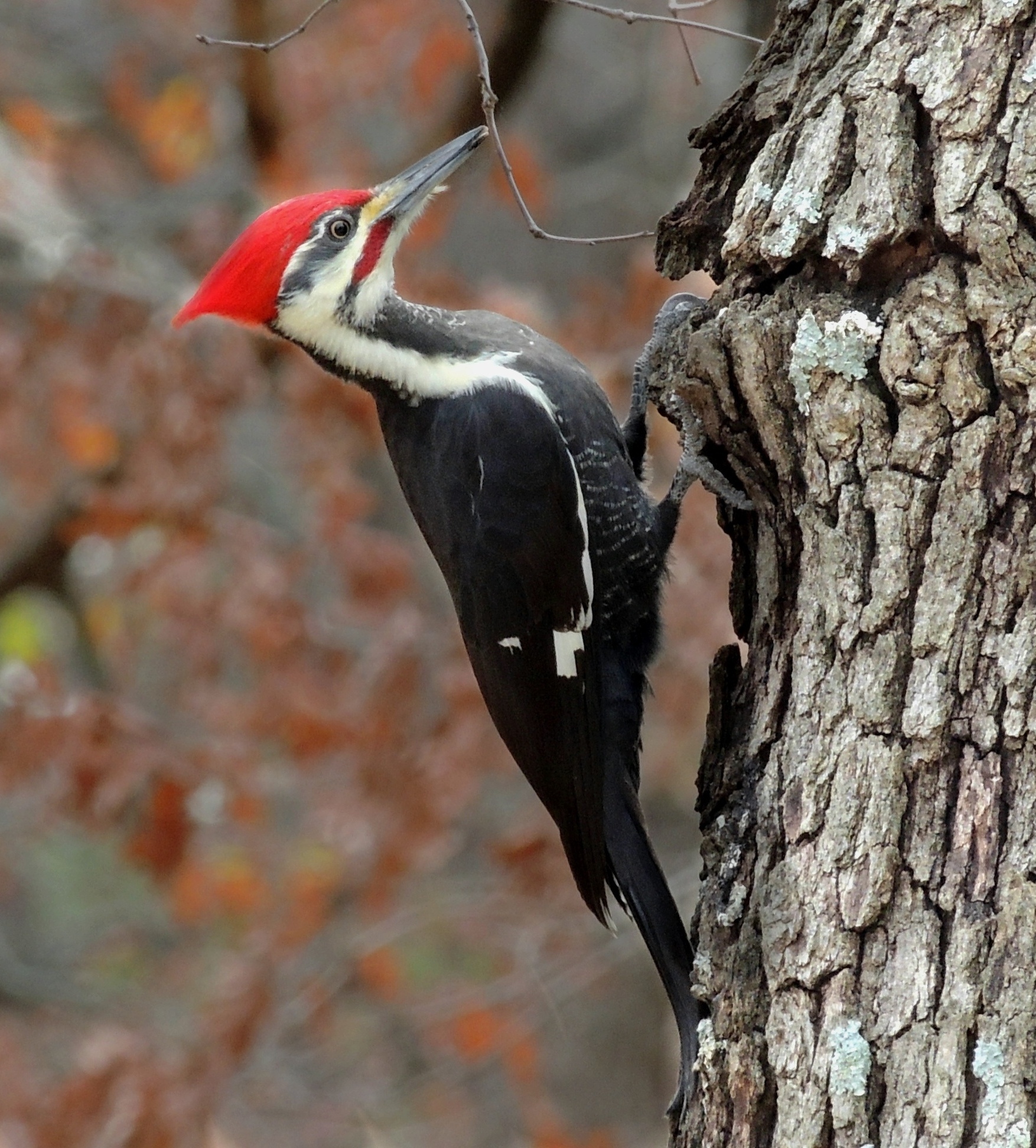
Pileated woodpecker. Image credit: Josh Laymon, Creative Commons
The cold temperate to low boreal climate of this ecoregion is characterized by warm summers and cold winters. “Lake effects” along the shores of the Great Lakes increase the length of the growing season and influence the amount and timing of precipitation. These effects are much reduced in the western portion of the ecoregion because the prevailing winds come from the Great Plains, producing a more continental climate with colder winter temperatures and a shorter growing season.
This ecoregion is transitional in vegetation between temperate and boreal forest. The characteristic mixed forests include a post-fire succession from quaking aspen, paper birch, and jack pine to white spruce, black spruce, and balsam fir. Extensive black spruce stands cover thousands of hectares in the northern portions of the ecoregion. Jack pine historically occupied the most extreme, drought-prone sites, with red pine on slightly moister sites and white pine on sandy lake plains. All of these pine communities are characterized by relatively frequent fire.
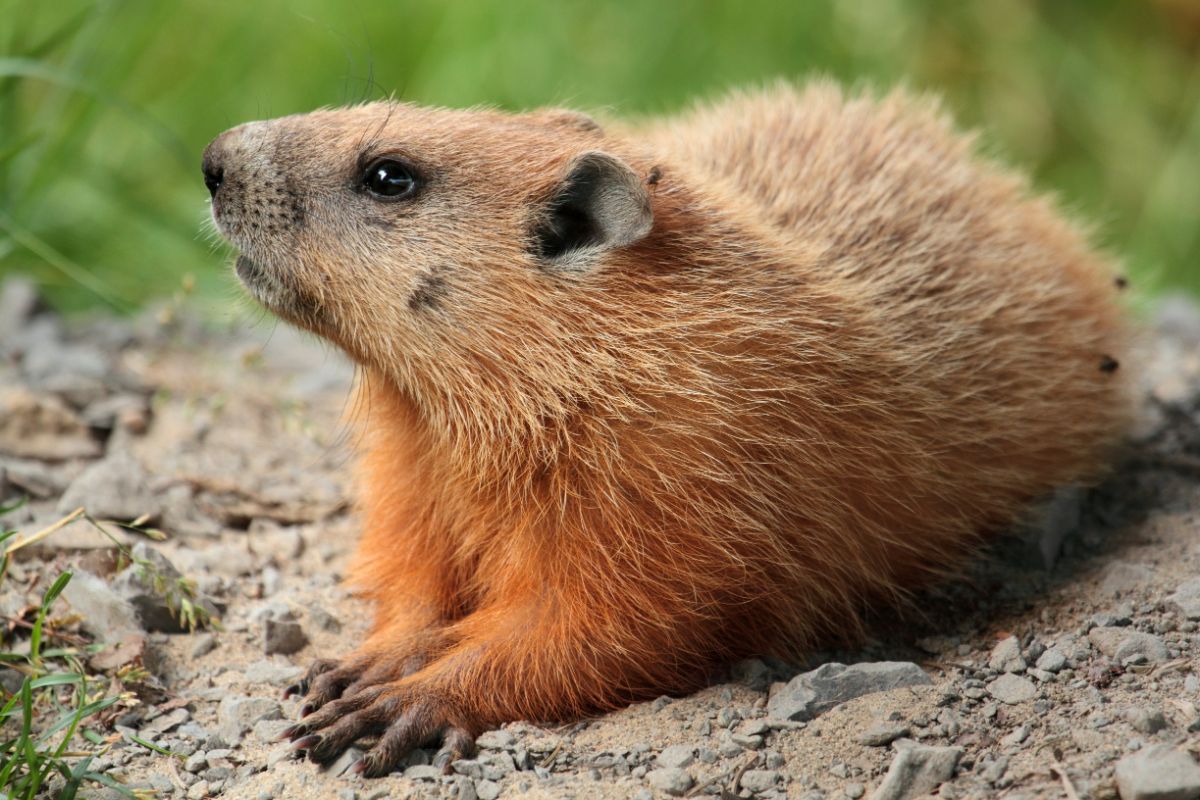
Groundhog. Image credit: Creative Commons
Extensive logging of red and white pines has led to their replacement by deciduous trees. Other natural communities include northern hardwood forest (with sugar maple, yellow birch, eastern hemlock, American beech in warmer areas, and other trees), swamp forest, and peatland. The extensive peatlands of northern Minnesota are still largely intact despite efforts in the early 1900s to ditch and drain them.
Other common wetlands include treed bowl bogs with surrounding swamps. Mammals include moose, white-tailed deer, beaver, snowshoe hare, lynx, eastern timber wolf, black bear, and an apparently increasing population of cougar. The well-studied wolf population on Isle Royale has crashed due to the spread of canine disease and interrupted natural migration, resulting in a population explosion of moose. However, a decision was recently made to transplant wild wolves from the mainland to the island. The diversity of breeding bird species in this ecoregion is among the highest on the continent.
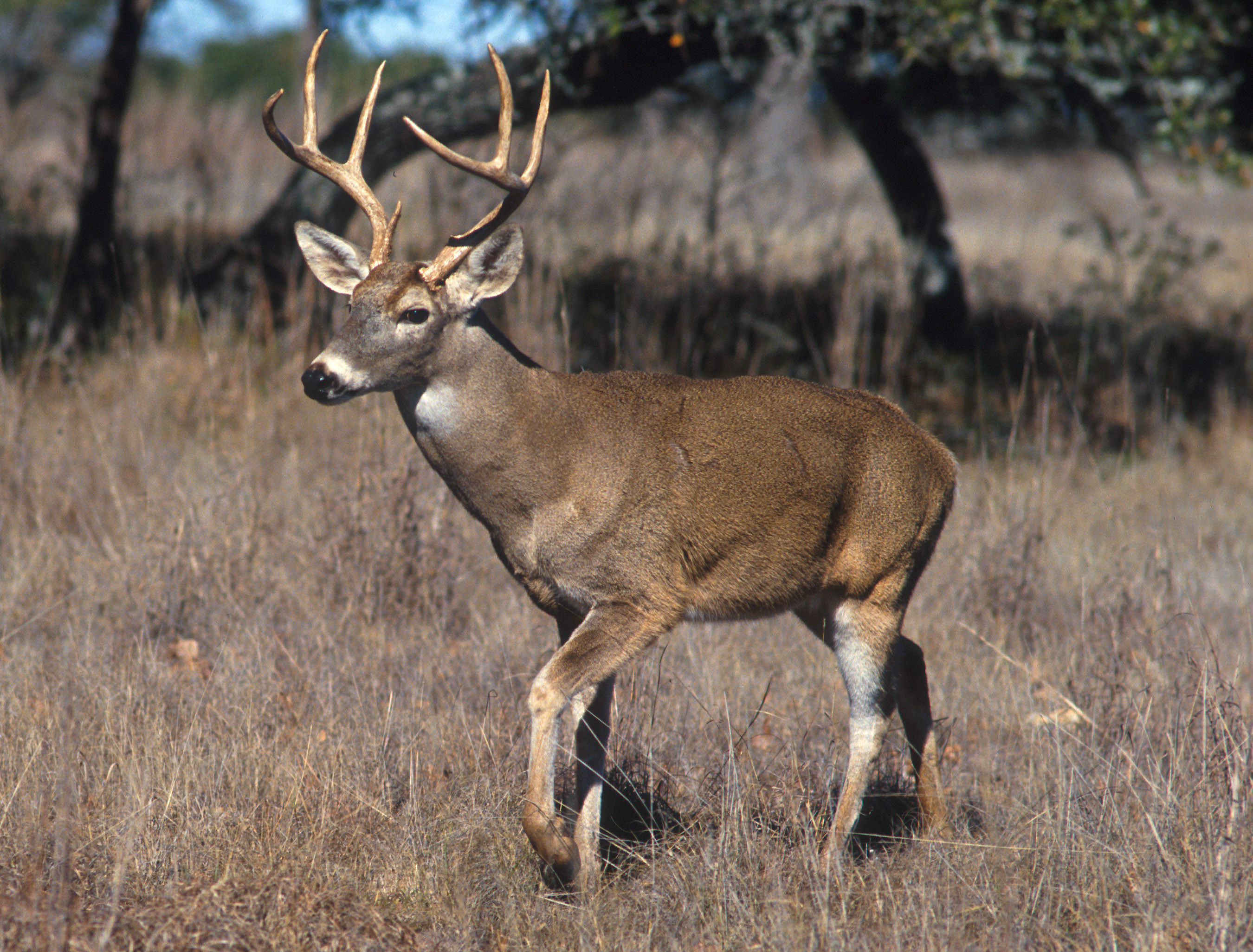
White tailed deer. Image credit: Scott Bauer, Creative Commons
The Western Great Lakes Forests ecoregion has 15% of its area protected, and 65% of natural habitat remains outside protected areas, but only around 20% of the vegetation is considered highly intact due to the impacts of logging, agriculture, and housing development such as summer cottages on lakes. Still, Minnesota has about 2,630 km2 of old-growth forest remaining, much more than any other eastern state.
Priority conservation actions for the next decade are to: 1) protect remaining intact blocks of natural vegetation, roadless areas, old growth, and undeveloped rivers and lakes by preventing additional summer cottage development; 2) greatly increase federal, provincial, and local acquisition of conservation lands; and 3) improve management of existing conservation lands, especially with respect to fire and carnivores (wolves, bears, lynx, and cougar).
Citations
1. Ricketts, T.H. et al. 1999. Terrestrial Ecoregions of North America: A Conservation Assessment. Island Press, Washington, D.C.
2. Riley, J.L. 2013. The Once and Future Great Lakes County: An Ecological History. McGill-Queen’s University Press, Montreal.
3. Tester, J.R. 1995. Minnesota’s Natural Heritage: An Ecological Perspective. University of Minnesota Press, Minneapolis.
